Shedding Old Skins
Hopeful wishes of renewal, wisdom, and good fortune found in the sweet, meditative tradition of hoshigaki to beckon the Year of the Wood Snake.
As a kid, I loved persimmons. While I was growing up, my mother and grandmother didn’t express their love in words but rather with plates of fresh fruit: a bountiful rainbow of unspoken affection through meticulously cut-and-peeled oranges, grapes, strawberries, and persimmons. Having lived away from home for some time now, I don’t get to have persimmons as much as I would like, so I look forward to enjoying them at my family’s Lunar New Year celebrations.

With persimmons on the brain, the art of hoshigaki captivated me when artist Pamela Baron shared a series of Instagram stories showcasing its beautiful process: harvesting hachiya persimmons from her friend’s tree, peeling their skins, stringing up the stemmed fruit to naturally dry, and massaging them regularly for ideal texture. I filed this away with the promise of my possible attempts someday, only to be reminded of it again a few months later (more on that shortly).
In many Asian cultures, persimmons are considered auspicious fruit. Their round and plump character signify abundance and prosperity, while their sweet taste and bright color for joy and happiness. The Chinese word shì (柿, “persimmon”) phonetically resembles shì (事, “matters” or “business”) as well as the Chinese phrase shì shì rú yì (事事如意, “everything goes as wished” or “all things come to fruition”). As a result, a collection of persimmons welcomes joyous occasions and successful affairs in the new year.

During the fall season in Japan, it is common along the countryside to find rows of persimmons tied on strings, an ancient practice that has been observed for centuries. A combination of two Japanese words — hoshi (干し) for “dried” and kaki (柿) for “persimmon” — hoshigaki is the traditional Japanese method of drying persimmons for later consumption, creating a sweet, chewy, and flavorful preserved fruit considered a delicacy, commonly referred to as the Kobe beef of fruit. They’ve also been used as ornaments in traditional new year decorations for good luck — as such, it embodies the idea of preserving sweetness and abundance for the year ahead. This careful, slow exercise of making hoshigaki symbolizes patience, passage of time, and rewards of diligent effort.
There are two common types of persimmons used for this tradition. While the rounder, more stout fuyu are more conventional for drying in Korea and China, the teardrop-shaped ones called hachiya are typically dried as hoshigaki in Japan. Otherwise incredibly tannic and bitter, this particular variety cannot be eaten until they completely ripen to a pudding-like consistency.

Making hoshigaki is very labor-intensive, requiring much patience and care. The persimmons are peeled carefully, leaving intact the calyx (i.e., the leafy part on top), as it helps with hanging the fruit during the drying process. Once string is tied by calyx, the peeled persimmons are hanged in cool, dry, well-ventilated place to avoid mold. Traditionally, this is all done outdoors, often in a sunny, sheltered area where they can receive enough warmth but are protected from direct sunlight.
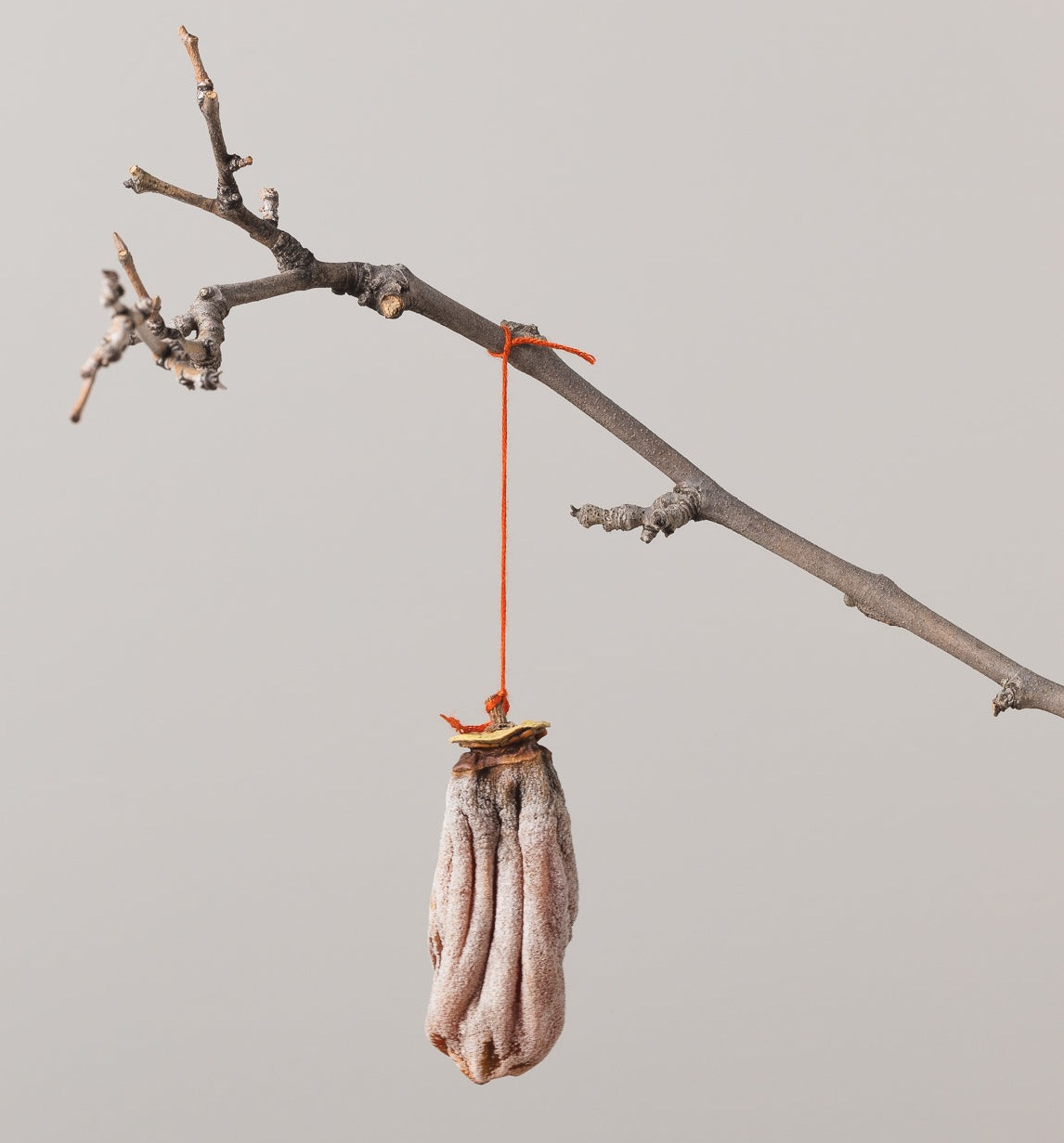
Over time, the persimmons will darken, shrink, and soften as they dry out, gently massaged each day to break down internal fibers and to promote even drying. Resulting from their sugars having risen to the surface during drying, the fruit then starts to develop a powdery white coating on the outside — this “sweating” of sugar bloom gives the hoshigaki its characteristic taste and texture. After three or four weeks (or longer, depending on the climate), the persimmons are fully dried with a soft, chewy mouthfeel as well as sugar crystals on the skins, adding natural sweetness to the fruit.
📬 Email: Friendly reminder this may be cut off in your inbox! This particular newsletter will be best viewed via Substack app or in your preferred browser. Happy reading 🙏
THE CONCEPT
I recently discovered West Village’s Té Company participates in crafting their own hoshigaki, with the sale of these pristinely dried fruits dropping around Lunar New Year. A couple weeks ago, I ordered a box of their dried hachiya — one accompanied by a looseleaf oolong tea called Ruby Brew — in time for the festivities celebrating the upcoming Year of the Snake.
Each year, the Chinese zodiac, which operates in a 12-year cycle, shepherds in specific characteristics and energies associated with that given year’s zodiac sign. The Year of the Snake (as well as the people born in those years) exemplifies wisdom, intuition, and charm. In addition, the five elements (Wood, Fire, Earth, Metal, and Water) cycle through in 60-year intervals to engage with each zodiac sign. The year 2025 is not only the Year of the Snake, but the Year of the Wood Snake. The combination of the Snake sign with Wood brings compassion, creativity, adaptability, and renewal, emphasizing harmony and nurturing relationships.
In Chinese culture, the snake is also seen as a symbol of mystery, deep thinking, and transformation. Akin to how snakes shed their skin, this zodiac sign is linked to personal growth and the ability to evolve with change. As a tie-in to the Year of the Wood Snake, I see the magic of hoshigaki embracing the life cycle of harvest and undergoing similar transformation: from fresh fruit peeled from its original skin into a prized culinary delight over time. The patience and care behind this tradition mirrors the thoughtful and deliberate nature of those born under the Snake sign.
Of course, this endeavor would not be complete without a wine pairing to contemplate, so a special Sicilian passito by producer Firriato made for a fitting choice. This wine is comprised of Zibibbo (Muscat of Alexandria) grapes from two manual harvests. Initial grapes are hand-picked during the first ten days of September from the ripest bunches to be left out to dry in the sun and wind on racks (similar to hoshigaki) until total dehydration, which takes about 40 days.
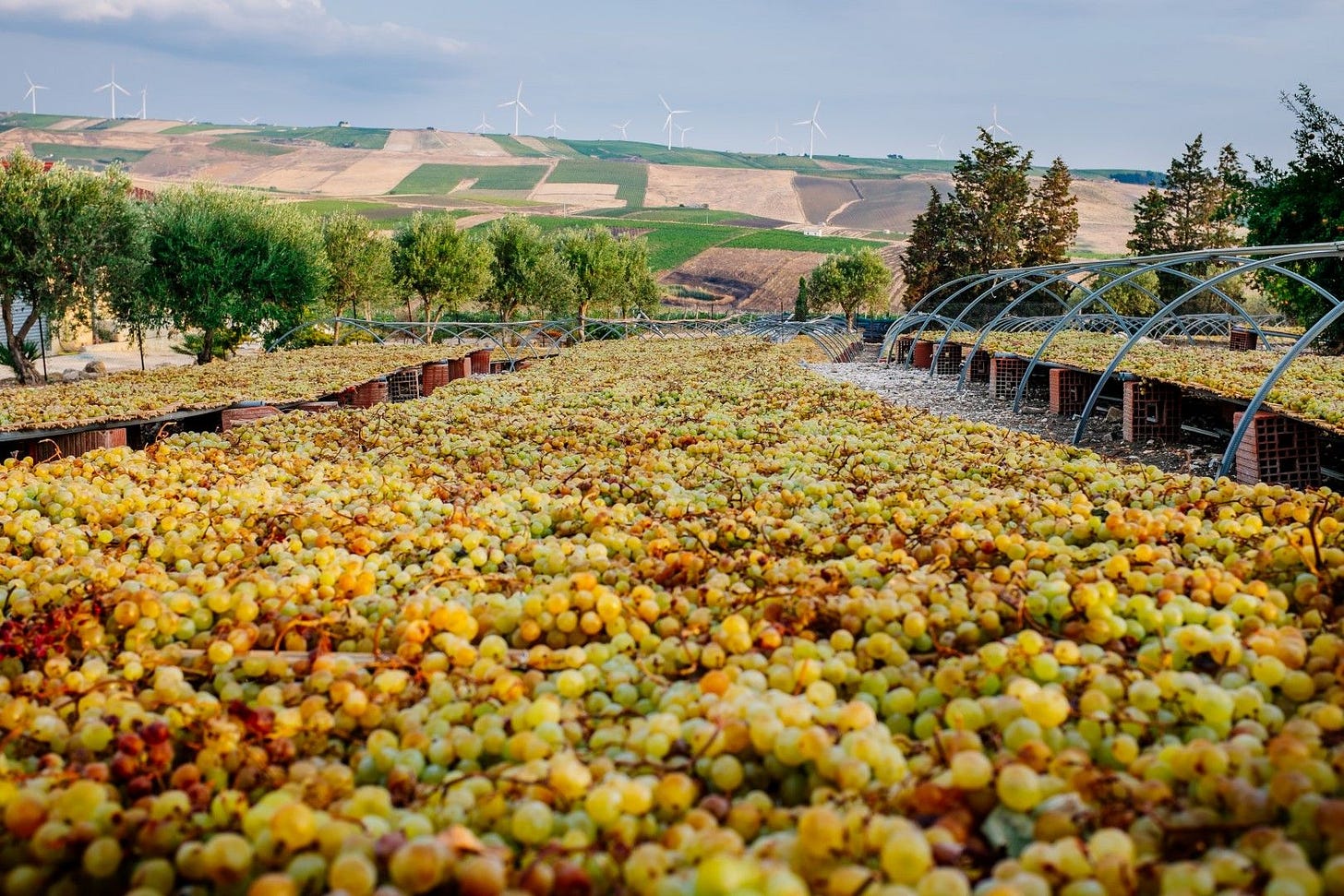
The remaining portion is kept in the vineyard until reaching an optimal level of ripeness for late harvest (between 20 to 30 days later). Once drying is finished, the grapes are de-stemmed by hand to be infused directly in the second (late) harvest. Within Italian winemaking, this method of infusion is absolutely unique to Firriato, allowing the grapes in contact with late harvest wine to swell up and release their precious aromatic properties, creating an incomparably balanced passito.
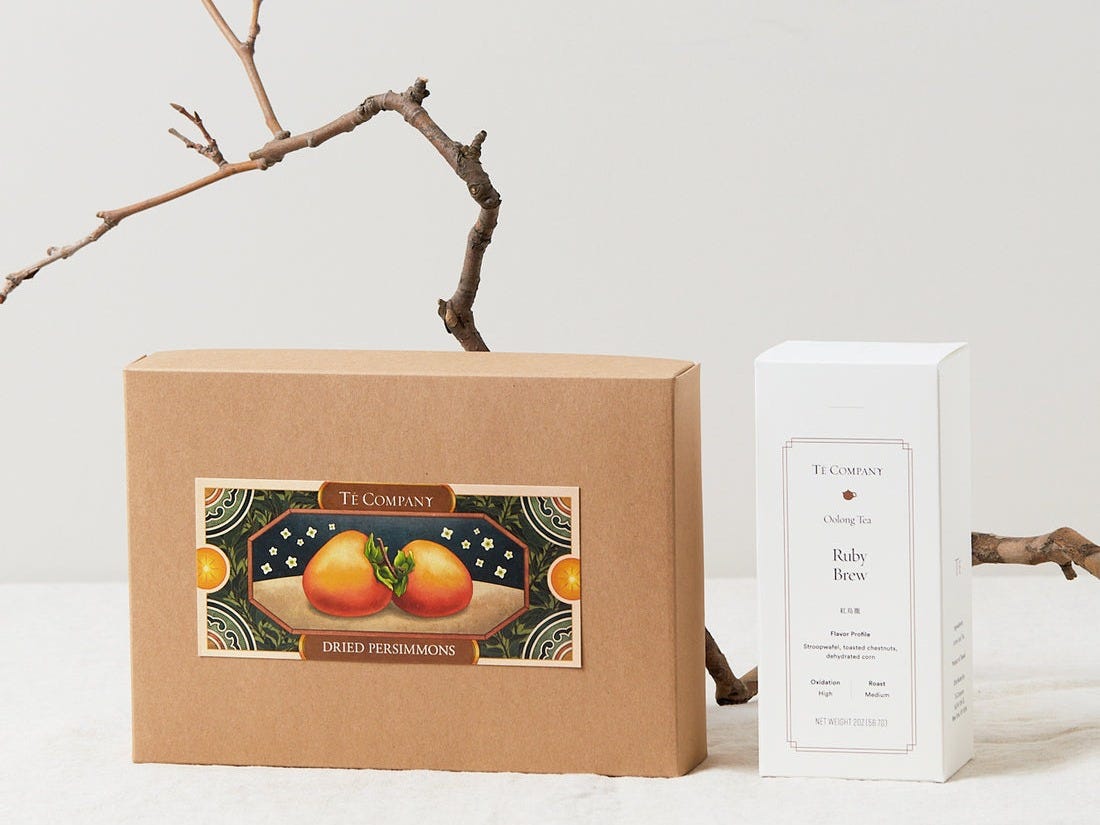
I was equally curious about the Té’s pairing of Ruby Brew oolong tea. A relative newcomer in Taiwanese tea making, Ruby Brew is a heavily oxidized and roasted tea. Just within the last decade, local tea producers collaborated with tea academics to perfect the art of high oxidation and gentle roast. Production of this tea is still scarce and has only recently made its way to the West. They’ve described it to have aromas of toasted chestnuts followed by a sweet palate of caramel, stroopwafel, and cherry which warm into a silky texture and notes of dehydrated corn. Straddling a lovely balance between sweet and toasty, this tea is the perfect choice for indecisive individuals or those who love roasted teas.
The deep smoky flavors from this Ruby Brew tea cuts through the chewy richness of the hoshigaki, resetting your palate anew with each bite and sip, equally savory on all accounts. In contrast, the passito’s notes of raisin-y concentration and candied orange peels went hand-in-hand with a similar experience on the palate from tasting the hoshigaki — honeyed sweet potato, spiced gingerbread, and apricot skins. Both made for lovely pairing experiences, tackling the task from different ends while arriving to notable sensory encounters.
THE WINEUP
Firriato 2020 Terre Siciliane ‘L’Ecrù’ Passito
$41 @ Eataly Vino NY (500mL)
SoilAir Selection (New York) | 🇮🇹 dessert white
Muscat of Alexandria (Zibibbo)
apricot preserves ・ raisined delight ・ candied orange
Té Company NV ‘Ruby Brew’ (紅烏龍) Oolong Tea
$28 @ Té Company (2 oz.)
🇹🇼 oolong tea
Jinxuan / Qingxin
smoky mountain air ・ caramel earth ・ toasted chestnuts
THE CODA
How uncanny for me that Té Company paired its hoshigaki with an oolong tea. Straight out of a Proustian tale, home tastes of ready-to-eat persimmons and endless cups of concentrated oolong tea. Isn’t that what new year celebrations like this are all about? Coming together with family over delicious meals, shared happiness, and full bellies. My heart feels a nourished warmth after this splendid treat of well-tended hoshigaki over thoughtfully chosen brew and passito — both embodying the phrase my family might utter in lieu of any overt affection: “Oh, not too sweet.”

Wishing you and your loved ones a happy, healthy, and prosperous Year of the Wood Snake — 恭喜發財, 新年快樂, 身體健康! 🐍🪵🧧🎊
If you enjoyed this Substack post, please consider:
tapping ❤️ below
tapping 💬 and share your thoughts
subscribing to The Decanterbury Tales
Cheers,
Stefie aka ‘Two Bottle Stef’ 💁🏻♀️✌️🍾





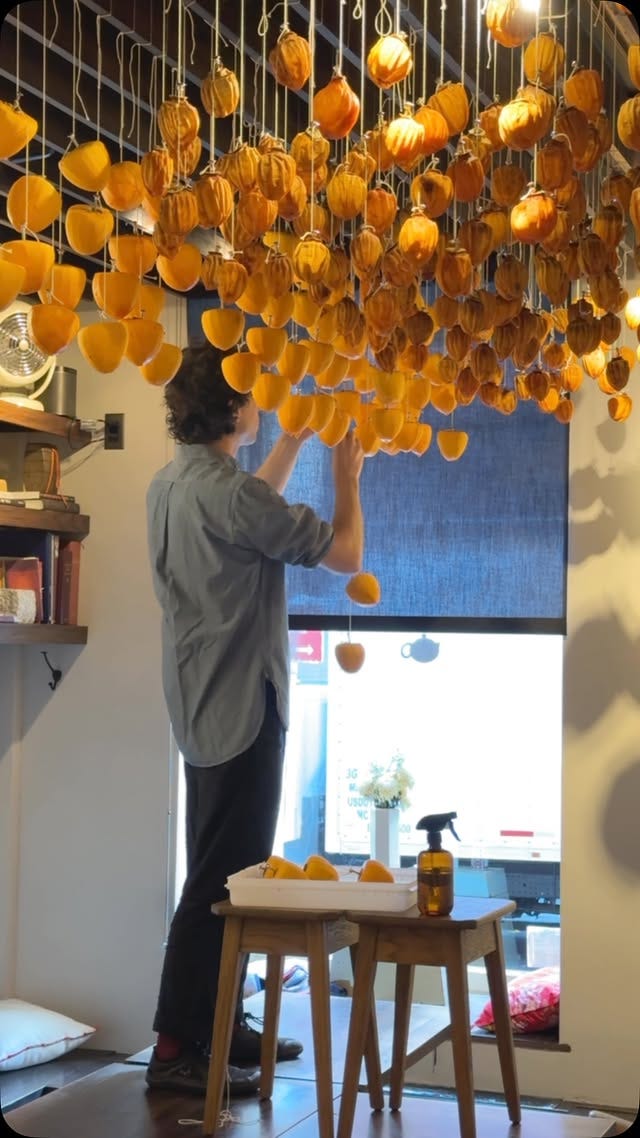

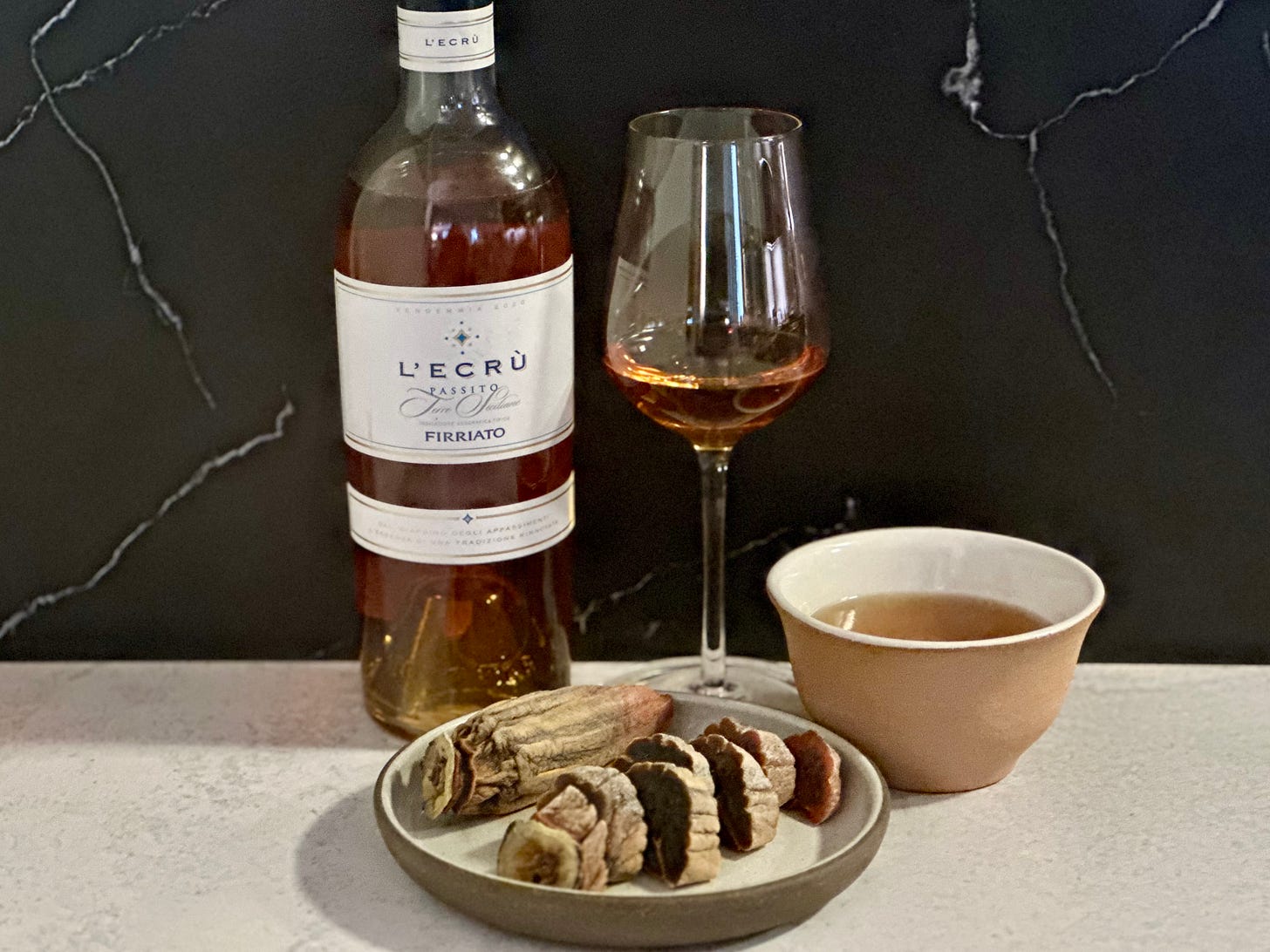
Happy Lunar new year 🧧